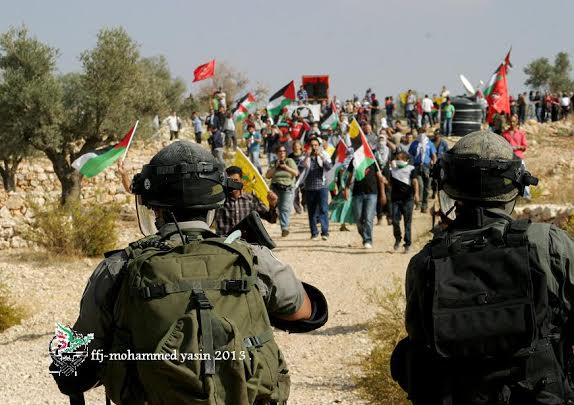Tag: Yassir Arafat
-
Several injuries during Bi’lin weekly demonstration
16th October 2013 | Friends of Freedom and Justice | Bil’in, Occupied Palestine Yesterday during the weekly Bi’lin demonstration, an Egyptian photographer was injured after being shot by a tear gas canister in his back, Ismaeil Mohamed Abu Rahma (17-years-old) was shot by three rubber bullets in his back and Mohamed Hamed (21-years-old) suffered from tear gas…
-
Updated with video: Apartheid wall smashed on anniversary of independence declaration
15th November 2013 | International Solidarity Movement, Ramallah Team | Bir Nabala and Rafat, Occupied Palestine This morning, November 15, 2013, 25 years after Yasser Arafat declared independence of the Palestinian state, a group of Palestinian activists undertook a direct action against the annexation wall and fence, supported by both Israeli and international activists. At approximately…
-
Israeli army assaults Arafat memorial march
12th November 2013 | International Solidarity Movement, Nablus Team | Kafr Qaddum, Occupied Palestine The residents of Kafr Qaddum held their annual anniversary demonstration marking Yasser Arafat’s death, despite strong repression from the Israeli army. At approximately 2:30 pm, Palestinian demonstrators and international activists assembled in front of the illegal settlement of Qedumim. After about 30 minutes, the…



